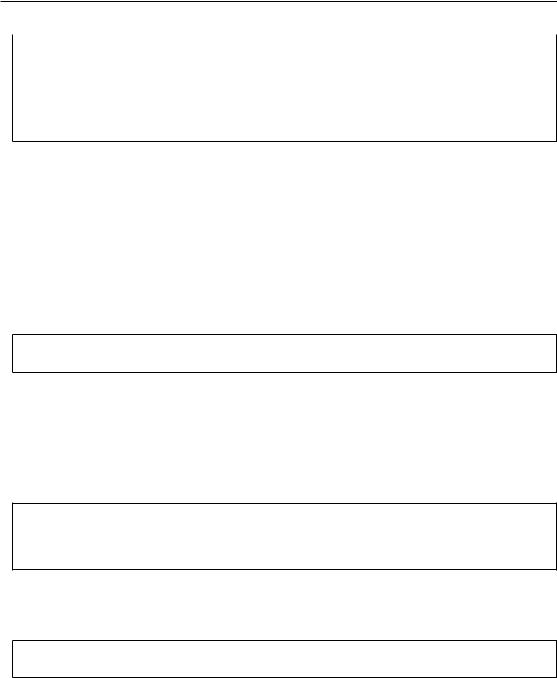
- •Front Matter
- •Copyright, Trademarks, and Attributions
- •Attributions
- •Print Production
- •Contacting The Publisher
- •HTML Version and Source Code
- •Typographical Conventions
- •Author Introduction
- •Audience
- •Book Content
- •The Genesis of repoze.bfg
- •The Genesis of Pyramid
- •Thanks
- •Pyramid Introduction
- •What Makes Pyramid Unique
- •URL generation
- •Debug Toolbar
- •Debugging settings
- •Class-based and function-based views
- •Extensible templating
- •Rendered views can return dictionaries
- •Event system
- •Built-in internationalization
- •HTTP caching
- •Sessions
- •Speed
- •Exception views
- •No singletons
- •View predicates and many views per route
- •Transaction management
- •Flexible authentication and authorization
- •Traversal
- •Tweens
- •View response adapters
- •Testing
- •Support
- •Documentation
- •What Is The Pylons Project?
- •Pyramid and Other Web Frameworks
- •Installing Pyramid
- •Before You Install
- •Installing Pyramid on a UNIX System
- •Installing the virtualenv Package
- •Creating the Virtual Python Environment
- •Installing Pyramid Into the Virtual Python Environment
- •Installing Pyramid on a Windows System
- •What Gets Installed
- •Application Configuration
- •Summary
- •Creating Your First Pyramid Application
- •Hello World
- •Imports
- •View Callable Declarations
- •WSGI Application Creation
- •WSGI Application Serving
- •Conclusion
- •References
- •Creating a Pyramid Project
- •Scaffolds Included with Pyramid
- •Creating the Project
- •Installing your Newly Created Project for Development
- •Running The Tests For Your Application
- •Running The Project Application
- •Reloading Code
- •Viewing the Application
- •The Debug Toolbar
- •The Project Structure
- •The MyProject Project
- •development.ini
- •production.ini
- •MANIFEST.in
- •setup.py
- •setup.cfg
- •The myproject Package
- •__init__.py
- •views.py
- •static
- •templates/mytemplate.pt
- •tests.py
- •Modifying Package Structure
- •Using the Interactive Shell
- •What Is This pserve Thing
- •Using an Alternate WSGI Server
- •Startup
- •The Startup Process
- •Deployment Settings
- •Request Processing
- •URL Dispatch
- •High-Level Operational Overview
- •Route Pattern Syntax
- •Route Declaration Ordering
- •Route Matching
- •The Matchdict
- •The Matched Route
- •Routing Examples
- •Example 1
- •Example 2
- •Example 3
- •Matching the Root URL
- •Generating Route URLs
- •Static Routes
- •Debugging Route Matching
- •Using a Route Prefix to Compose Applications
- •Custom Route Predicates
- •Route Factories
- •Using Pyramid Security With URL Dispatch
- •Route View Callable Registration and Lookup Details
- •References
- •Views
- •View Callables
- •View Callable Responses
- •Using Special Exceptions In View Callables
- •HTTP Exceptions
- •How Pyramid Uses HTTP Exceptions
- •Custom Exception Views
- •Using a View Callable to Do an HTTP Redirect
- •Handling Form Submissions in View Callables (Unicode and Character Set Issues)
- •Alternate View Callable Argument/Calling Conventions
- •Renderers
- •Writing View Callables Which Use a Renderer
- •Built-In Renderers
- •string: String Renderer
- •json: JSON Renderer
- •JSONP Renderer
- •*.pt or *.txt: Chameleon Template Renderers
- •*.mak or *.mako: Mako Template Renderer
- •Varying Attributes of Rendered Responses
- •Deprecated Mechanism to Vary Attributes of Rendered Responses
- •Adding and Changing Renderers
- •Adding a New Renderer
- •Changing an Existing Renderer
- •Overriding A Renderer At Runtime
- •Templates
- •Using Templates Directly
- •System Values Used During Rendering
- •Chameleon ZPT Templates
- •A Sample ZPT Template
- •Using ZPT Macros in Pyramid
- •Templating with Chameleon Text Templates
- •Side Effects of Rendering a Chameleon Template
- •Debugging Templates
- •Chameleon Template Internationalization
- •Templating With Mako Templates
- •A Sample Mako Template
- •Automatically Reloading Templates
- •Available Add-On Template System Bindings
- •View Configuration
- •Mapping a Resource or URL Pattern to a View Callable
- •@view_defaults Class Decorator
- •NotFound Errors
- •Debugging View Configuration
- •Static Assets
- •Serving Static Assets
- •Generating Static Asset URLs
- •Advanced: Serving Static Assets Using a View Callable
- •Root-Relative Custom Static View (URL Dispatch Only)
- •Overriding Assets
- •The override_asset API
- •Request and Response Objects
- •Request
- •Special Attributes Added to the Request by Pyramid
- •URLs
- •Methods
- •Unicode
- •Multidict
- •Dealing With A JSON-Encoded Request Body
- •Cleaning Up After a Request
- •More Details
- •Response
- •Headers
- •Instantiating the Response
- •Exception Responses
- •More Details
- •Sessions
- •Using The Default Session Factory
- •Using a Session Object
- •Using Alternate Session Factories
- •Creating Your Own Session Factory
- •Flash Messages
- •Using the session.flash Method
- •Using the session.pop_flash Method
- •Using the session.peek_flash Method
- •Preventing Cross-Site Request Forgery Attacks
- •Using the session.get_csrf_token Method
- •Using the session.new_csrf_token Method
- •Using Events
- •An Example
- •Reloading Templates
- •Reloading Assets
- •Debugging Authorization
- •Debugging Not Found Errors
- •Debugging Route Matching
- •Preventing HTTP Caching
- •Debugging All
- •Reloading All
- •Default Locale Name
- •Including Packages
- •pyramid.includes vs. pyramid.config.Configurator.include()
- •Mako Template Render Settings
- •Mako Directories
- •Mako Module Directory
- •Mako Input Encoding
- •Mako Error Handler
- •Mako Default Filters
- •Mako Import
- •Mako Preprocessor
- •Examples
- •Understanding the Distinction Between reload_templates and reload_assets
- •Adding A Custom Setting
- •Logging
- •Sending Logging Messages
- •Filtering log messages
- •Logging Exceptions
- •PasteDeploy Configuration Files
- •PasteDeploy
- •Entry Points and PasteDeploy .ini Files
- •[DEFAULTS] Section of a PasteDeploy .ini File
- •Command-Line Pyramid
- •Displaying Matching Views for a Given URL
- •The Interactive Shell
- •Extending the Shell
- •IPython or bpython
- •Displaying All Application Routes
- •Invoking a Request
- •Writing a Script
- •Changing the Request
- •Cleanup
- •Setting Up Logging
- •Making Your Script into a Console Script
- •Internationalization and Localization
- •Creating a Translation String
- •Using The TranslationString Class
- •Using the TranslationStringFactory Class
- •Working With gettext Translation Files
- •Installing Babel and Lingua
- •Extracting Messages from Code and Templates
- •Initializing a Message Catalog File
- •Updating a Catalog File
- •Compiling a Message Catalog File
- •Using a Localizer
- •Performing a Translation
- •Performing a Pluralization
- •Obtaining the Locale Name for a Request
- •Performing Date Formatting and Currency Formatting
- •Chameleon Template Support for Translation Strings
- •Mako Pyramid I18N Support
- •Localization-Related Deployment Settings
- •Activating Translation
- •Adding a Translation Directory
- •Setting the Locale
- •Locale Negotiators
- •The Default Locale Negotiator
- •Using a Custom Locale Negotiator
- •Virtual Hosting
- •Virtual Root Support
- •Further Documentation and Examples
- •Test Set Up and Tear Down
- •What?
- •Using the Configurator and pyramid.testing APIs in Unit Tests
- •Creating Integration Tests
- •Creating Functional Tests
- •Resources
- •Location-Aware Resources
- •Generating The URL Of A Resource
- •Overriding Resource URL Generation
- •Generating the Path To a Resource
- •Finding a Resource by Path
- •Obtaining the Lineage of a Resource
- •Determining if a Resource is In The Lineage of Another Resource
- •Finding the Root Resource
- •Resources Which Implement Interfaces
- •Finding a Resource With a Class or Interface in Lineage
- •Pyramid API Functions That Act Against Resources
- •Much Ado About Traversal
- •URL Dispatch
- •Historical Refresher
- •Traversal (aka Resource Location)
- •View Lookup
- •Use Cases
- •Traversal
- •Traversal Details
- •The Resource Tree
- •The Traversal Algorithm
- •A Description of The Traversal Algorithm
- •Traversal Algorithm Examples
- •References
- •Security
- •Enabling an Authorization Policy
- •Enabling an Authorization Policy Imperatively
- •Protecting Views with Permissions
- •Setting a Default Permission
- •Assigning ACLs to your Resource Objects
- •Elements of an ACL
- •Special Principal Names
- •Special Permissions
- •Special ACEs
- •ACL Inheritance and Location-Awareness
- •Changing the Forbidden View
- •Debugging View Authorization Failures
- •Debugging Imperative Authorization Failures
- •Creating Your Own Authentication Policy
- •Creating Your Own Authorization Policy
- •Combining Traversal and URL Dispatch
- •A Review of Non-Hybrid Applications
- •URL Dispatch Only
- •Traversal Only
- •Hybrid Applications
- •The Root Object for a Route Match
- •Using *traverse In a Route Pattern
- •Using *subpath in a Route Pattern
- •Corner Cases
- •Registering a Default View for a Route That Has a view Attribute
- •Using Hooks
- •Changing the Not Found View
- •Changing the Forbidden View
- •Changing the Request Factory
- •Using The Before Render Event
- •Adding Renderer Globals (Deprecated)
- •Using Response Callbacks
- •Using Finished Callbacks
- •Changing the Traverser
- •Changing How pyramid.request.Request.resource_url() Generates a URL
- •Changing How Pyramid Treats View Responses
- •Using a View Mapper
- •Creating a Tween Factory
- •Registering an Implicit Tween Factory
- •Suggesting Implicit Tween Ordering
- •Explicit Tween Ordering
- •Displaying Tween Ordering
- •Pyramid Configuration Introspection
- •Using the Introspector
- •Introspectable Objects
- •Pyramid Introspection Categories
- •Introspection in the Toolbar
- •Disabling Introspection
- •Rules for Building An Extensible Application
- •Fundamental Plugpoints
- •Extending an Existing Application
- •Extending the Application
- •Overriding Views
- •Overriding Routes
- •Overriding Assets
- •Advanced Configuration
- •Two-Phase Configuration
- •Using config.action in a Directive
- •Adding Configuration Introspection
- •Introspectable Relationships
- •Thread Locals
- •Why and How Pyramid Uses Thread Local Variables
- •Using the Zope Component Architecture in Pyramid
- •Using the ZCA Global API in a Pyramid Application
- •Disusing the Global ZCA API
- •Enabling the ZCA Global API by Using hook_zca
- •Enabling the ZCA Global API by Using The ZCA Global Registry
- •Background
- •Design
- •Overall
- •Models
- •Views
- •Security
- •Summary
- •Installation
- •Preparation
- •Make a Project
- •Run the Tests
- •Expose Test Coverage Information
- •Start the Application
- •Visit the Application in a Browser
- •Decisions the zodb Scaffold Has Made For You
- •Basic Layout
- •Resources and Models with models.py
- •Views With views.py
- •Defining the Domain Model
- •Delete the Database
- •Edit models.py
- •Look at the Result of Our Edits to models.py
- •View the Application in a Browser
- •Defining Views
- •Declaring Dependencies in Our setup.py File
- •Adding View Functions
- •Viewing the Result of all Our Edits to views.py
- •Adding Templates
- •Viewing the Application in a Browser
- •Adding Authorization
- •Add Authentication and Authorization Policies
- •Add security.py
- •Give Our Root Resource an ACL
- •Add Login and Logout Views
- •Change Existing Views
- •Add permission Declarations to our view_config Decorators
- •Add the login.pt Template
- •Change view.pt and edit.pt
- •See Our Changes To views.py and our Templates
- •View the Application in a Browser
- •Adding Tests
- •Test the Models
- •Test the Views
- •Functional tests
- •View the results of all our edits to tests.py
- •Run the Tests
- •Distributing Your Application
- •SQLAlchemy + URL Dispatch Wiki Tutorial
- •Background
- •Design
- •Overall
- •Models
- •Views
- •Security
- •Summary
- •Installation
- •Preparation
- •Making a Project
- •Running the Tests
- •Exposing Test Coverage Information
- •Initializing the Database
- •Starting the Application
- •Decisions the alchemy Scaffold Has Made For You
- •Basic Layout
- •View Declarations via views.py
- •Content Models with models.py
- •Making Edits to models.py
- •Changing scripts/initializedb.py
- •Reinitializing the Database
- •Viewing the Application in a Browser
- •Defining Views
- •Declaring Dependencies in Our setup.py File
- •Running setup.py develop
- •Changing the views.py File
- •Adding Templates
- •Adding Routes to __init__.py
- •Viewing the Application in a Browser
- •Adding Authorization
- •Adding A Root Factory
- •Add an Authorization Policy and an Authentication Policy
- •Adding an authentication policy callback
- •Adding Login and Logout Views
- •Changing Existing Views
- •Adding the login.pt Template
- •Seeing Our Changes To views.py and our Templates
- •Viewing the Application in a Browser
- •Adding Tests
- •Testing the Models
- •Testing the Views
- •Functional tests
- •Viewing the results of all our edits to tests.py
- •Running the Tests
- •Distributing Your Application
- •Converting a repoze.bfg Application to Pyramid
- •Running a Pyramid Application under mod_wsgi
- •pyramid.authorization
- •pyramid.authentication
- •Authentication Policies
- •Helper Classes
- •pyramid.chameleon_text
- •pyramid.chameleon_zpt
- •pyramid.config
- •pyramid.events
- •Functions
- •Event Types
- •pyramid.exceptions
- •pyramid.httpexceptions
- •HTTP Exceptions
- •pyramid.i18n
- •pyramid.interfaces
- •Event-Related Interfaces
- •Other Interfaces
- •pyramid.location
- •pyramid.paster
- •pyramid.registry
- •pyramid.renderers
- •pyramid.request
- •pyramid.response
- •Functions
- •pyramid.scripting
- •pyramid.security
- •Authentication API Functions
- •Authorization API Functions
- •Constants
- •Return Values
- •pyramid.settings
- •pyramid.testing
- •pyramid.threadlocal
- •pyramid.traversal
- •pyramid.url
- •pyramid.view
- •pyramid.wsgi
- •Glossary

37. SQLALCHEMY + URL DISPATCH WIKI TUTORIAL
6
7
if userid in USERS:
return GROUPS.get(userid, [])
The groupfinder function defined here is an authentication policy “callback”; it is a callable that accepts a userid and a request. If the userid exists in the system, the callback will return a sequence of group identifiers (or an empty sequence if the user isn’t a member of any groups). If the userid does not exist in the system, the callback will return None. In a production system, user and group data will most often come from a database, but here we use “dummy” data to represent user and groups sources. Note that the editor user is a member of the group:editors group in our dummy group data (the GROUPS data structure).
We’ve given the editor user membership to the group:editors by mapping him to this group in the GROUPS data structure (GROUPS = {’editor’:[’group:editors’]}). Since the groupfinder function consults the GROUPS data structure, this will mean that, as a result of the ACL attached to the context object returned by the root factory, and the permission associated with the add_page and edit_page views, the editor user should be able to add and edit pages.
37.7.4 Adding Login and Logout Views
To our views.py we’ll add a login view callable which renders a login form and processes the post from the login form, checking credentials.
We’ll also add a logout view callable to our application and provide a link to it. This view will clear the credentials of the logged in user and redirect back to the front page.
The login view callable will look something like this:
1 |
@view_config(route_name=’login’, renderer=’templates/login.pt’) |
2 |
@forbidden_view_config(renderer=’templates/login.pt’) |
3 |
def login(request): |
4 |
login_url = request.route_url(’login’) |
5referrer = request.url
6if referrer == login_url:
7 |
referrer = ’/’ # never use the login form itself as came_from |
|
8 |
came_from |
= request.params.get(’came_from’, referrer) |
9 |
message = |
’’ |
10 |
login = ’’ |
|
11 |
password = ’’ |
|
12 |
if ’form.submitted’ in request.params: |
|
13 |
login |
= request.params[’login’] |
14 |
password = request.params[’password’] |
|
476

37.7. ADDING AUTHORIZATION
15
16
17
18
19
20
21
22
23
24
25
26
27
if USERS.get(login) == password: headers = remember(request, login)
return HTTPFound(location = came_from, headers = headers)
message = ’Failed login’
return dict(
message = message,
url = request.application_url + ’/login’, came_from = came_from,
login = login, password = password,
)
The logout view callable will look something like this:
1 @view_config(route_name=’logout’) 2 def logout(request):
3headers = forget(request)
4return HTTPFound(location = request.route_url(’view_wiki’),
5 |
headers = headers) |
The login view callable is decorated with two decorators, a @view_config decorator, which associates it with the login route, and a @forbidden_view_config decorator which turns it in to an exception view. The one which associates it with the login route makes it visible when we visit /login. The other one makes it a forbidden view. The forbidden view is displayed whenever Pyramid or your application raises an pyramid.httpexceptions.HTTPForbidden exception. In this case, we’ll be relying on the forbidden view to show the login form whenver someone attempts to execute an action which they’re not yet authorized to perform.
The logout view callable is decorated with a @view_config decorator which associates it with the logout route. This makes it visible when we visit /logout.
We’ll need to import some stuff to service the needs of these two functions: the pyramid.view.forbidden_view_config class, a number of values from the pyramid.security module, and a value from our newly added tutorial.security package. Add the following import statements to the head of the views.py file:
1
2
3
4
from pyramid.view import ( view_config, forbidden_view_config,
)
5
477

37. SQLALCHEMY + URL DISPATCH WIKI TUTORIAL
6
7
8
9
10
11
12
from pyramid.security import ( remember,
forget, authenticated_userid,
)
from .security import USERS
37.7.5 Changing Existing Views
Add permision declarations
Then we need to change each of our view_page, edit_page and add_page view callables in views.py. Within each of these views, we’ll need to pass a “logged in” parameter to its template. We’ll add something like this to each view body:
1
2
from pyramid.security import authenticated_userid logged_in = authenticated_userid(request)
Return a logged_in flag to the renderer
We’ll then change the return value of these views to pass the resulting logged_in value to the template, e.g.:
1
2
3
4
return dict(page = page, content = content,
logged_in = logged_in, edit_url = edit_url)
We’ll also need to add a permission value to the @view_config decorator for each of the add_page and edit_page view callables. For each, we’ll add permission=’edit’, for example:
1
2
@view_config(route_name=’edit_page’, renderer=’templates/edit.pt’, permission=’edit’)
478

37.7. ADDING AUTHORIZATION
See the permission=’edit’ we added there? This indicates that the view callables which these views reference cannot be invoked without the authenticated user possessing the edit permission with respect to the current context.
Adding these permission arguments causes Pyramid to make the assertion that only users who possess the effective edit permission at the time of the request may invoke those two views. We’ve granted the group:editors principal the edit permission in the root factory via its ACL, so only a user who is a member of the group named group:editors will be able to invoke the views associated with the add_page or edit_page routes.
37.7.6 Adding the login.pt Template
Add a login.pt template to your templates directory. It’s referred to within the login view we just added to views.py.
<!DOCTYPE html PUBLIC "-//W3C//DTD XHTML 1.0 Strict//EN" "http://www.w3.org/TR/xhtml1/DTD/xhtml1-strict.dtd">
<html xmlns="http://www.w3.org/1999/xhtml" xml:lang="en" xmlns:tal="http://xml.zope.org/namespaces/tal">
<head>
<title>Login - Pyramid tutorial wiki (based on TurboGears 20-Minute Wiki)</title>
<meta http-equiv="Content-Type" content="text/html;charset=UTF-8"/> <meta name="keywords" content="python web application" />
<meta name="description" content="pyramid web application" /> <link rel="shortcut icon"
href="${request.static_url(’tutorial:static/favicon.ico’)}" /> <link rel="stylesheet"
href="${request.static_url(’tutorial:static/pylons.css’)}" type="text/css" media="screen" charset="utf-8" />
<!--[if lte IE 6]> <link rel="stylesheet"
href="${request.static_url(’tutorial:static/ie6.css’)}" type="text/css" media="screen" charset="utf-8" />
<![endif]-->
</head>
<body>
<div id="wrap">
<div id="top-small">
<div class="top-small align-center">
<div>
<img width="220" height="50" alt="pyramid" src="${request.static_url(’tutorial:static/pyramid-small.png’)}" />
</div>
479

37. SQLALCHEMY + URL DISPATCH WIKI TUTORIAL
</div>
</div>
<div id="middle">
<div class="middle align-right">
<div id="left" class="app-welcome align-left"> <b>Login</b><br/>
<span tal:replace="message"/>
</div>
<div id="right" class="app-welcome align-right"></div>
</div>
</div>
<div id="bottom">
<div class="bottom">
<form action="${url}" method="post">
<input type="hidden" name="came_from" value="${came_from}"/> <input type="text" name="login" value="${login}"/><br/> <input type="password" name="password"
value="${password}"/><br/>
<input type="submit" name="form.submitted" value="Log In"/>
</form>
</div>
</div>
</div>
<div id="footer"> <div class="footer"
>© Copyright 2008-2011, Agendaless Consulting.</div>
</div>
</body>
</html>
37.7.7 Add a “Logout” link when logged in
We’ll also need to change our edit.pt and view.pt templates to display a “Logout” link if someone is logged in. This link will invoke the logout view.
To do so we’ll add this to both templates within the <div id="right" class="app-welcome align-right"> div:
<span tal:condition="logged_in">
<a href="${request.application_url}/logout">Logout</a>
</span>
480
